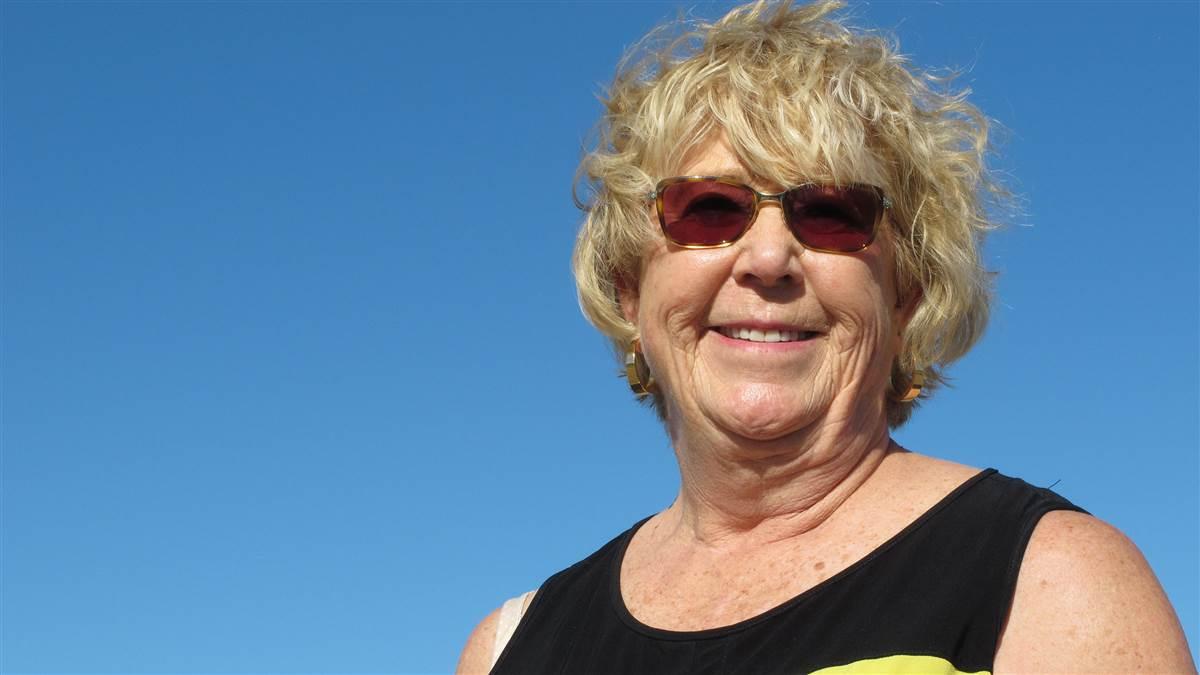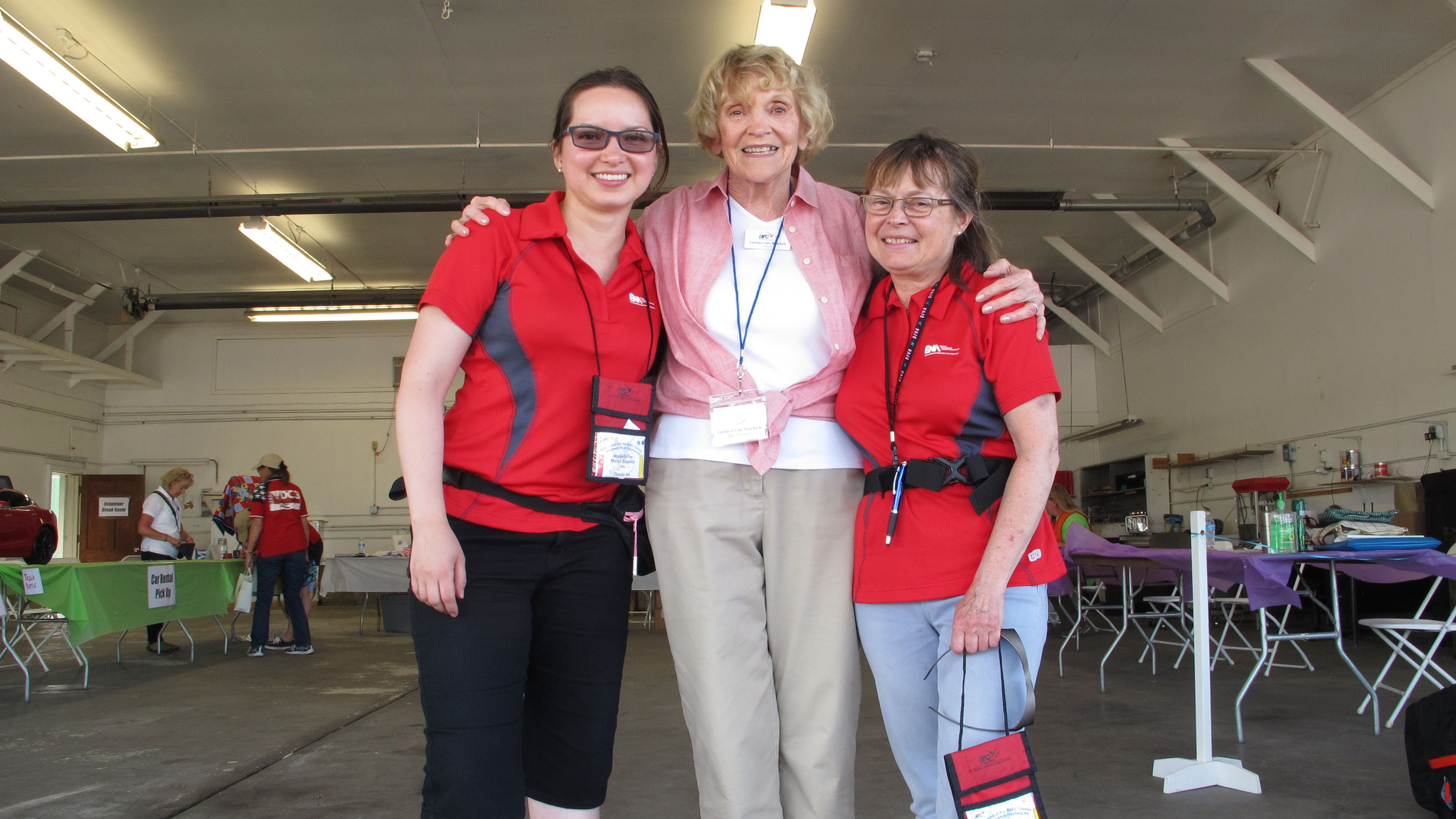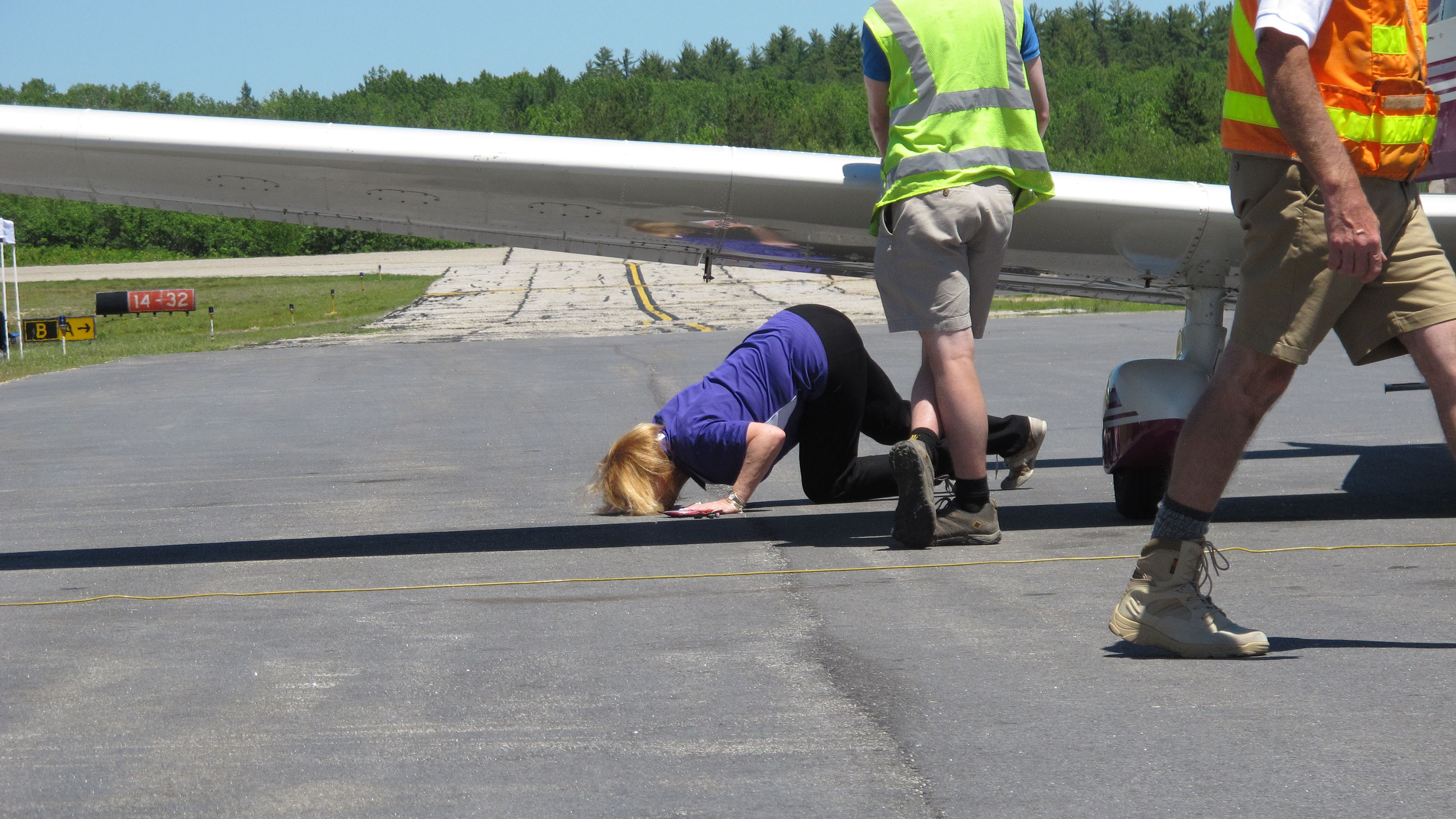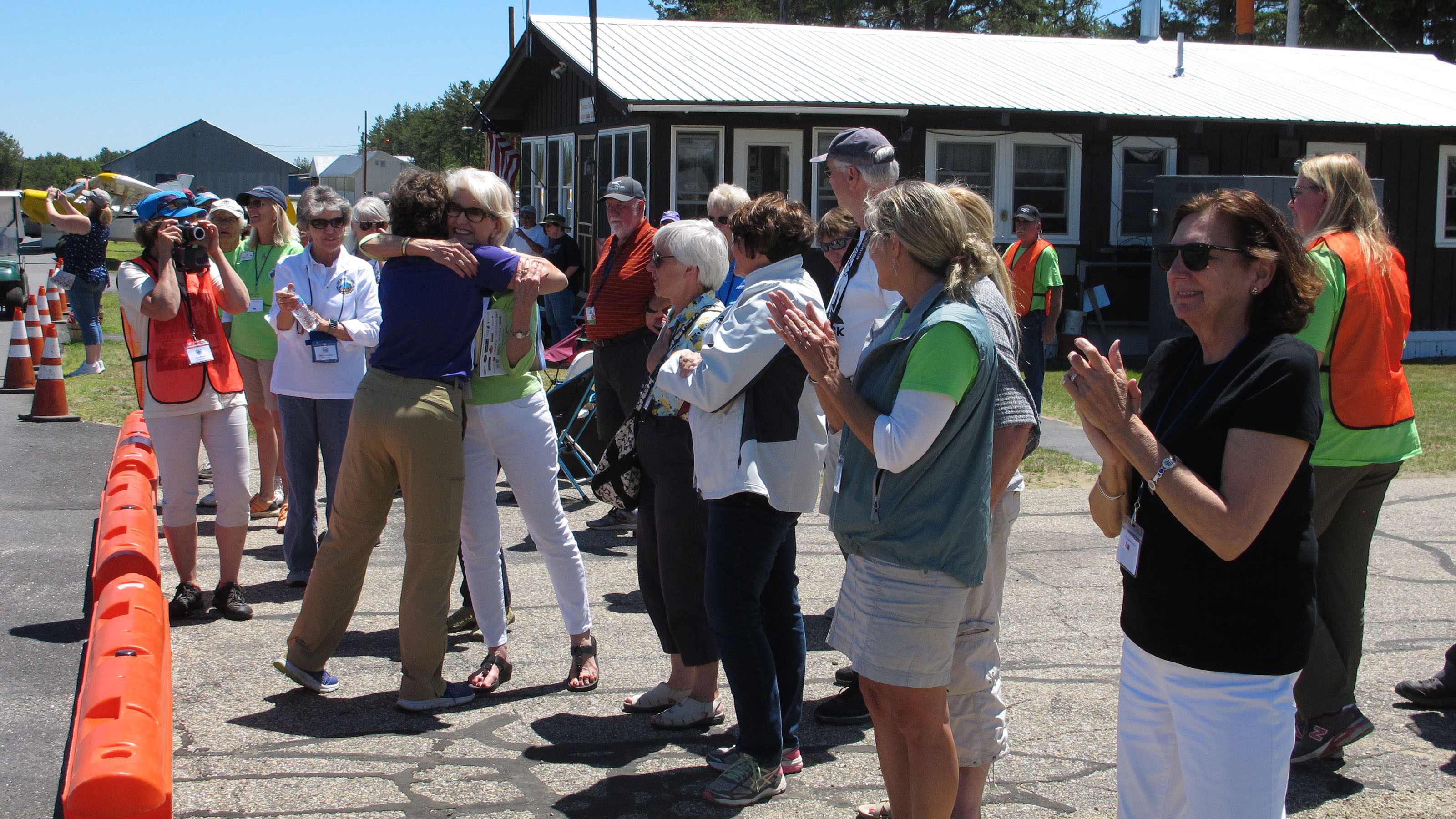Air Race Classic brings Maine airport to life
You can rave about Reno and read a bunch about Red Bull, but Eastern Slope Regional Airport in Fryeburg, Maine, was the center of the air-racing universe on June 21 and 22, when the country airport in the state's southwest corner took on a role of honor as the finish line for the 2018 Air Race Classic.
This annual race is best known as the competition between flight teams of women pilots who compete to achieve the best score against a benchmark speed assigned to their make and model aircraft, calculated following a three-day VFR cross-country. This year, the race began in Sweetwater, Texas, and concluded in Fryeburg, with a Tennessee team, Mariah Ferber and Paige Kessler, declared the winners.
One thing you learn while spending two days covering the Air Race Classic at its terminal airport is that there’s much more to the history-rich event than its unique brand of air racing.
Friends and family of the competitors travel from far-off places to gather at the finish line and greet arrivals. Members of several New England chapters of The Ninety-Nines, the international, charitable organization of women pilots, were on hand to provide each arriving team with a welcome fit for champions.
Former racers—still active members of the extended Air Race Classic family—came to Fryeburg, sharing stories of classics past.
A computer screen mounted above the counter in the homey fixed-base operation office helped keep track of the progress of teams still airborne, and with the weather playing havoc along much of the route, arriving teams were pressed for any details on the whereabouts of others.

One of those former racers, I discover during a casual chat with a bystander, is Marolyn P. Wilson of Yorkville, New York. She is a 25-time racer and two-time champion, having won with Elaine Roehing, her former instructor, in 2003—the 100th anniversary of powered flight, she notes—and again in 2004, in a Piper PA–28.
“A slick airplane and a lot of luck” are keys to winning, says Wilson, who was named a New York State Woman of Distinction in 2012, and whose father learned how to land from famed aviator Wiley Post, and managed a Utica, New York, airport.
Speaking of winning, the 2017 champions, Dee Bond and McKenzie Krutsinger of team Kiwi Express, are the first to land in Fryeburg on June 21, taxiing their Cessna 182 to the ramp, to a round of warm greetings. (Their flight-leg speeds will give them a sixth-place finish when all the scores are tallied on June 24.)
Bond, an eight-time racer, is full of news about the bad weather that has truncated the 2018 race to just three scorable legs of nine that had been planned, the final leg being one of those in play.
Extending 10 brightly polished fingernails, Bond says her key to winning is to “put your racing reds on, start as though you mean to continue, and never give up.”

If the Air Race Classic is any indication, the youth movement in aviation is alive and well—and racing. This year’s roster contains a large contingent of college and university teams—including Canadian racers Madeleine Mena Zapata and Michèle Rivest of École Nationale d'Aérotechnique of Quebec (twelfth place). As arrivals continue into the second day, the youthfulness of many pilots is striking, and is underlined by an exchange between a flight team and race officials overheard near the hangar serving as the race command post.
“Are you going to rent a car?” a race official asked.
“No, our parents are all here,” young pilots responded.
Two of the spectators are men with airplanes hangared at Eastern Slope Regional. They have expressed delight at the activity, and the public and media interest they hope the race has generated, along with an enhanced appreciation of their airport, with its 4,200-foot Runway 14/32 and its scenic locale, situated, as its name suggests, easterly of the White Mountains’ foothills.
Slope, or slopes?
About those foothills. In the interest of accuracy I pose a question to Dave Cullinan, a former chef who was bitten by the aviation bug and now manages the airport: Is the airport’s name Eastern “Slopes” Regional Airport, as it says on the sectional chart and on the airport sign out on the main road, or is it Eastern Slope Regional Airport—singular—as it appears on the airport website, and elsewhere?
The answer is “slope.”
Cullinan says it’s a bit of a story as to why that is; for the lowdown, he suggests I inquire with the two men with whom I have just been speaking.
They turn out to be airport officials Carl Thibodeau, a Cessna 182 owner and vice chairman of the airport board’s executive committee, and Ed Bergeron, its secretary.
According to them, the airport was chartered in about 1961 as Eastern Slope Regional Airport. Later the plural form of slope became the customary way of referring to the place, eventually finding its way into official and published airport information. Recently the board voted to change it back, so, for the record, the airport’s name is Eastern Slope Regional Airport.
I move out of the bright sunlight toward the shade of a picnic table set in a cluster of pines to eat lunch as a couple rides up the airport road on bicycles, curious about all the unusual activity. They are surprised to hear that there is a big aviation event in town—which explains the many airplanes with big black numbers on the cowls now being parked on the ramp, and the low passes being flown by arrivals; the low pass at 200 feet agl stops the race time clock, after which the racer comes back around and lands.
There’s a notam
As the happy commotion of the Air Race Classic builds, everyday activity also continues at Eastern Slope. A Pilatus PC–12 single-engine turboprop arrives in the area, adjusting its pattern to allow a racer to perform a clock-stopping low pass. A straight-tail Cessna 172, one of the really old ones, lands during a lull; a taildragger taxies out from a distant hangar and departs; a helicopter comes and goes a few times, perhaps in training; a Cessna 421 twin comes in, lining up behind racers for fuel.
Now and then, non-race arrivals put the squeeze on competitors, despite a notice to airmen advising of unusual activity: “IZG 06/005 IZG AIRSPACE AIR RACE CLASSIC ACFT FLYIN WI AN AREA DEFINED AS 1NM RADIUS OF IZG SFC-500FT AGL DLY SR-SS 1806190901-1806230030.”
“But you have to read it,” someone quips.
Painting the ASOS
For every carefully planned event, there is likely to be one impossible-to-predict glitch.
Today—arguably the busiest day the airport has seen since who knows when—that glitch is the arrival of a technician to paint a section of the airport’s automated weather system, a chore that disables the system’s wind-reporting function.
The wind is light, vacillating between runway ends, but Cullinan, ever the airport’s top salesman and defender, is having none of it. He sends a lineman over to request that the technician desist, determined to keep the airport fully functioning and rueful that the fellow picked this particular day to drive two hours to work on the system.
“They’ve needed to paint it for years,” he says, noting the lack of red-and-white obstruction markings on the upper portion of the apparatus.
The trickle of arriving racers has become a steady stream.

Teresa Camp and Denise Robinson land in a Piper Archer. Robinson deplanes and kisses the ground as Camp regales their reception committee of Ninety-Nines from Connecticut with a story of wild weather with precipitation so hard it took paint off the airplane’s nose.
“It’s when you get scared a little bit, is when your mettle comes out,” Camp says, paying her teammate the compliment, “She’s a good pilot.”
Weather was also a big challenge for college competitors Jordan Cantrell and Gabriella Lindskoug, flying a 1999 Cessna 172R as team White Lightning from Middle Tennessee State University—and their exuberance at finishing makes for a fun media moment on the ramp.
Cantrell said she was on a pre-med track, studying psychology and chemistry, before the aviation bug bit.
Lindskoug can picture herself in a fighter jet or a corporate cockpit someday, and she noted that the race was a dramatic introduction to exercising her newly earned privileges as an instrument instructor. (To reach the final flight leg starting at Penn Yan, New York, pilots could fly there under IFR, if instrument-rated, from wherever they had landed because of the weather.)
Like many racers, the Tennessee pilots had arisen early that morning and headed for the airport, to be ready to depart when the winds aloft turned most favorable. With only three of the nine race legs counting for scoring because of the en route weather, a good result on the final run from Penn Yan to Fryeburg was very important.
On the other hand, “Safety over performance,” Lindskoug said.





